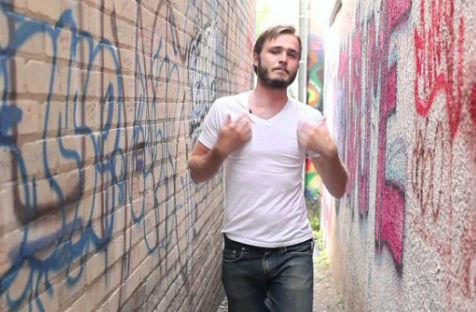Artists are neither possessed nor victims of mental illness, but creativity can channel their demons.
The myths that surround creativity have often centred on the idea of a lone genius, spontaneously creating beauty, while suffering from a uniquely sensitive temperament that sets the artist apart from the rest of the world. Such a belief has encouraged art historians to diagnose many great artists with conditions like depression, bipolar disorder, schizophrenia and OCD, so that creative geniuses like Van Gogh have become inextricably linked in the popular imagination with the idea that creativity is driven by mental illness.
Creative people are more likely to be diagnosed with depression and, particularly bipolar but the truth is less melodramatic. Most artists do not have a mental health disorder, and most people diagnosed with such a disorder are not artists.
The most interesting connections between creativity and mental health come not when we think of mental disturbance as a cause of creativity but rather when we flip the thinking on its head and see creativity as an outlet through which the experience of these types of disorders can be expressed.
From demons to psychoanalysis
The earliest depictions of mental health disorders in art used people who were supposed to be afflicted by ‘demonic possession ‘ or whose behaviour was in some way unusual, as subjects. These paintings are some of the best historical sources for understanding how mental disorders were perceived and treated in previous centuries, but they are seldom created from the perspective of someone who has experienced mental illness for themselves.
It may have required the development of less realistic forms for people to be able to express their own emotions, or for the public to accept such expressions. Van Gogh’s self-portraits and Edvard Munch’s The Scream, are among the earliest examples of this new type, but it was not until the rise of psychiatry and the change in attitudes to mental illness during the 20th century that it became common for artists to use their work to explore their own mental health.
Artists like Jackson Pollock took an interest in psychoanalysis, while others like Bobby Baker used their art to explain what it felt like to have a diagnosed mental disorder.
Performing the Mind
Performance poet Neil Hilborn draws on his experience of Obsessive Compulsive Disorder (OCD) through a medium that enables him to make use of some of the tics that have been associated with his condition. Hilborn ‘s whose recent recital during the final of the Rustbelt Regional Poetry Slam in the USA spread rapidly around the globe after it was popularized on Reddit. The poem, which Hilborn wrote two years ago following the break-up of his relationship, explores the poet’s experience through the lens of his OCD. ‘She said the whole thing was a mistake but how could it be a mistake if I didn’t have to wash my hands after I touched her…she was the only beautiful thing I ever got stuck on’.
The result is a unique and meaningful combination of shifting speeds, repetitions and movements that reveals the confusion and loss of security associated with the end of any significant relationship, while also allowing us to glimpse the world from Hilborn’s perspective. We are able not just to relate our own experiences of ending relationships to his, but also to understand more about what it is like to live with OCD.
The success of this piece demonstrates how much power creativity holds to change the way we think about mental health, through doing that which art does best: giving us insight into another person’s mind. The importance of the creative outlet to the artist himself was also emphasized when Hilborn appeared online to talk to his newfound fans. His own creative experience led him to recommend that ‘everyone, and I mean everyone do art therapy’.
Art as therapy
The therapeutic properties of art have long been recognized by artists, particularly those like Hilborn who have used it to express their experiences with mental health disorders, but extending this form of therapy to those who might not be naturally creative has shown how beneficial it can be for everyone to express themselves.
Encouraging more people to explore their own creativity, and allowing more artists to build careers in art therapy can help us towards a healthier society. The experience of Liz Kelder, a participant in an art therapy program run by the Creative Expression Centre for Arts Therapy (CECAT) in Western Australia, demonstrates how successful these types of programs have already been.
Kelder was referred to the program after she was diagnosed with Post Traumatic Stress Disorder (PTSD) and it has clearly played an important part in her recovery. Finding a way to explore her past and emotions has enabled her to manage her symptoms and take an active role in her own treatment. It has also given her the chance to present her paintings in a solo exhibition held by CECAT, which also organizes an annual display during Mental Health Week in October.
Viewing the work that is on display at CECAT might make us wonder about the link between mental health and creativity, but it is important that we take the right message away from the gallery. The beautiful artworks that have been inspired by the experiences of people like Van Gogh, Hilborn and Kelder show us that any experience can be communicated through art, and that art can provide a release for our strongest and most difficult emotions. Rather than seeing these works as proof of a creative mind that is driven by mental illness, we should consider them to be proof that anyone can benefit from being creative.
(Pictured: Neil Hilborn: a poet who uses his OCD)





